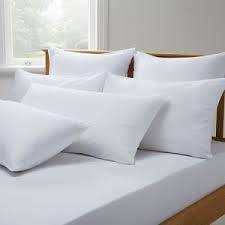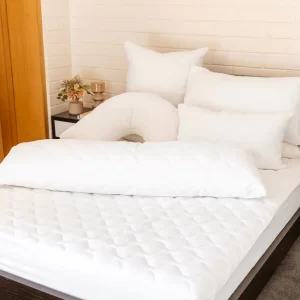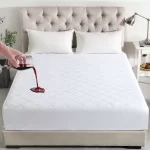The Importance of Bedding Hygiene: Tips for a Healthier Sleep Environment
In the hustle and bustle of our daily lives, we often overlook the significance of maintaining hygiene in one of the most essential aspects of our lives: our bedding. A good night’s sleep is not just about comfort; it’s also about creating a clean and healthy environment that promotes overall well-being. Let’s delve into why bedding hygiene matters and explore some practical tips for maintaining a healthier sleep sanctuary.

Why Bedding Hygiene Matters:
- Allergen Control: Bedding accumulates allergens like dust mites, pollen, and pet dander over time. These allergens can trigger allergies and respiratory issues, leading to disrupted sleep and discomfort.
- Bacterial Growth: Moisture from sweat and skin oils creates an ideal breeding ground for bacteria and fungi in bedding. This can contribute to skin irritation, acne, and even infections if left unchecked.
- Dust Mite Infestation: Dust mites thrive in warm, humid environments, making your bedding their perfect habitat. Their presence can exacerbate asthma and other respiratory conditions, causing nighttime coughing and wheezing.
- Skin Health: Dirty bedding can lead to clogged pores, acne breakouts, and even exacerbate conditions like eczema and psoriasis. Clean bedding helps maintain healthy skin by minimizing exposure to dirt and bacteria.
Tips for Maintaining Bedding Hygiene:
- Regular Washing: Make it a habit to launder your sheets, pillowcases, and blankets at least once a week in hot water (preferably above 130°F or 54°C) to kill dust mites and bacteria effectively.
- Use Hypoallergenic Materials: Opt for bedding made from hypoallergenic materials like cotton or bamboo, which are less likely to harbor allergens and are breathable, promoting better airflow.
- Invest in Mattress and Pillow Protectors: Encase your mattress and pillows in allergen-proof covers to create a barrier against dust mites and spills, extending the lifespan of your bedding while maintaining hygiene.
- Rotate Bedding Seasonally: Consider rotating heavier blankets and comforters with lighter options during warmer months to reduce sweating and moisture buildup, preventing bacterial growth.
- Air Out Your Bedding: Allow your bedding to air out in sunlight occasionally, as ultraviolet rays have natural disinfectant properties that can help kill bacteria and eliminate odors.
- Keep Pets Away: While cuddling with pets can be comforting, their fur and dander can exacerbate allergies and compromise bedding hygiene. Establish pet-free zones in the bedroom to minimize allergen exposure.
- Replace Old Bedding: Over time, bedding loses its integrity and becomes less effective at providing a clean sleep environment. Replace pillows every 1-2 years and mattresses every 7-10 years to ensure optimal hygiene and comfort.
Conclusion:
Prioritizing bedding hygiene is essential for creating a clean and healthy sleep environment conducive to restful nights and overall well-being. By implementing simple habits like regular washing, using hypoallergenic materials, and investing in protective covers, you can enjoy a fresher, more hygienic sleep sanctuary. Remember, a little effort in maintaining bedding hygiene goes a long way in improving sleep quality and promoting a healthier lifestyle.





